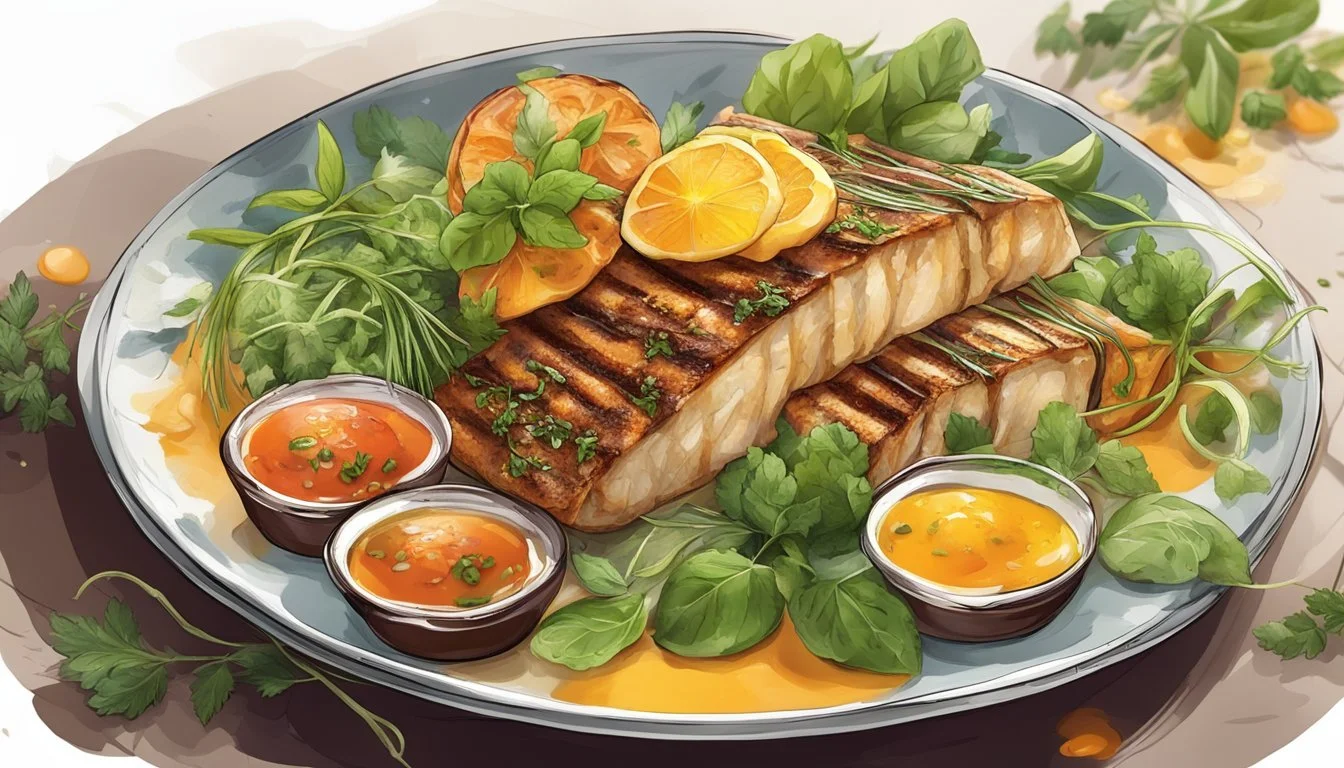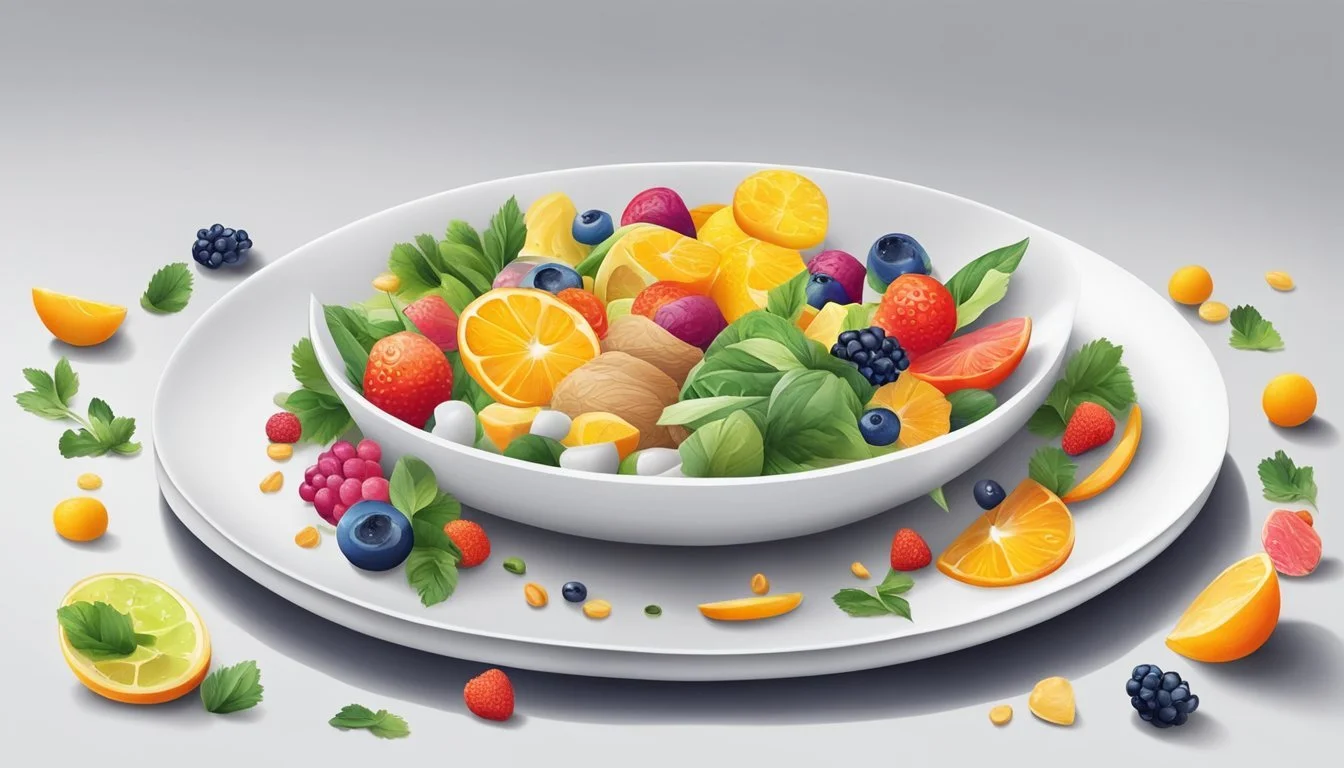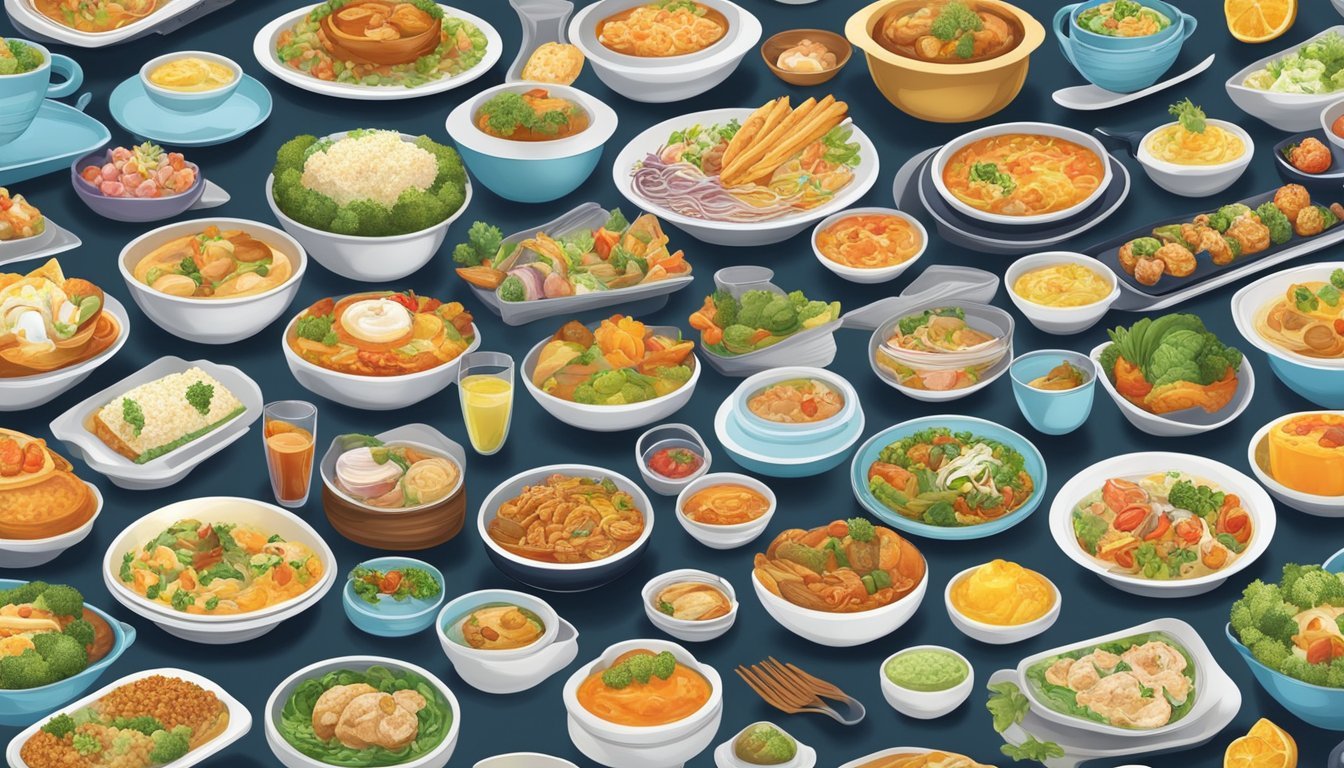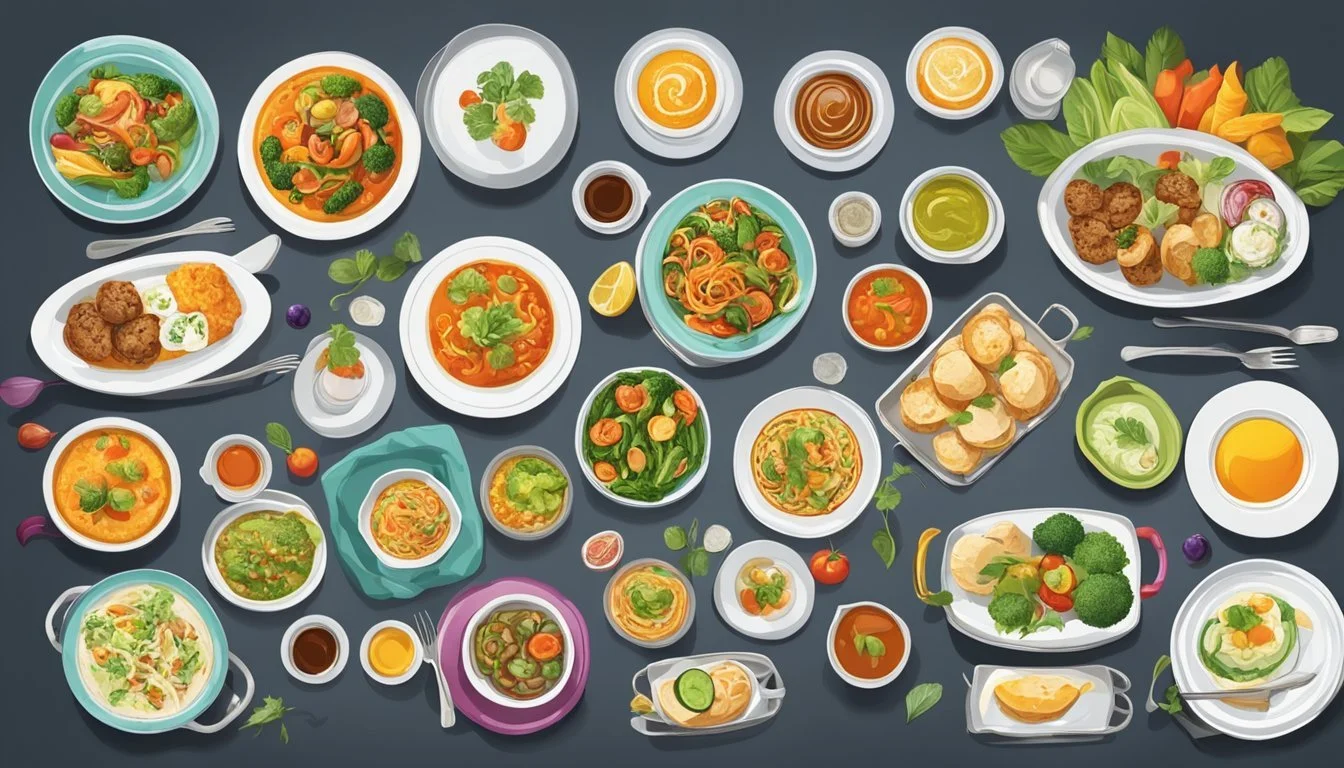The Art of Swicy
Master Your Plating and Presentation Skills
In culinary arts, the concept of 'Swicy'—a blend of sweet and spicy flavors—has become a popular trend, captivating the palates of food enthusiasts everywhere. The challenge for chefs is not only to balance these contrasting tastes but also to present them in a way that enhances the overall dining experience. Effective plating and presentation are critical, as they can transform a good dish into a great one, delighting the senses even before the first taste.
To master the art of Swicy presentation, chefs must treat the plate as a canvas, carefully considering the arrangement of each element. The main component should take center stage with supporting ingredients and garnishes arranged to complement and contrast, both in flavor and appearance. Employing techniques such as the use of negative space and intentional asymmetry helps to create a visually appealing dish that invites diners to engage with the Swicy theme.
Crafting a successful Swicy dish requires a meticulous approach to detail, where color, texture, and form play pivotal roles. The vibrant hues of spicy elements can be tempered with the softer shades of sweet components, while varied textures add depth to the presentation. Thoughtful plating not only accentuates the distinctiveness of Swicy flavors but also signals to diners the chef's skill in fusing taste and aesthetics.
Understanding the Basics of Plating
When approaching plating, chefs must consider several elements such as color, texture, and balance to create a visually appealing dish. Plating is more than serving; it's an art form that enhances the dining experience.
The Role of Color and Contrast
Chefs utilize color and contrast to make dishes visually stimulating. Incorporating a variety of hues with a mixture of warm colors—like yellow, red, or orange—and cool colors—such as blue and green—alongside neutral tones, such as white or black, can create a striking presentation. It's essential to achieve a balance that complements the dish without overwhelming the senses.
Warm Colors: Often used to convey warmth and comfort, suitable for hearty dishes.
Cool Colors: Provide a refreshing visual cue, perfect for salads or cold appetizers.
Neutral Tones: Serve as a backdrop, allowing vivid ingredients to stand out.
The Importance of Texture
Texture plays a critical role in enhancing the visual appeal and mouthfeel of a dish. Chefs should aim for a range of textures to provide contrast and interest. For instance, pairing a creamy element with something crunchy can elevate the sensory experience of the dish. Proportions should be considered to ensure that texture also complements the overall flavor profile.
Soft: Purees, mousses, and creams can offer a smooth contrast to other elements.
Crunchy: Nuts, crisp vegetables, or croutons can add a necessary bite to dishes.
Plating as a Canvas
The plate serves as a canvas for culinary artists. The arrangement of ingredients should be thoughtfully composed, with the main food item generally placed at the center. Space is leveraged to prevent the plate from appearing cluttered, and components are arranged to guide the diner's eyes across the meal, creating a harmonious balance of flavors, colors, and textures.
Main Ingredient: Should be the focal point and occupy the center.
Ancillary Ingredients: Artfully arranged around the main to create a complete image.
Fundamentals of Plate Presentation
Effective plate presentation techniques are fundamental to delivering a memorable dining experience. Every element on the plate should have a purpose and contribute to the overall aesthetic. Chefs consider the proportion of each component and utilize garnishes strategically to enhance both the look and taste. Plating should always complement the culinary creation, never detracting from the quality of the food.
Garnishes: Should add color or texture, and always be edible.
Negative Space: Use it wisely to create a frame for your ingredients and prevent overcrowding.
Advanced Plating Techniques
In the world of haute cuisine, advanced plating techniques are pivotal for creating not just a meal, but an experience. Mastery of sauce application, strategic stacking and layering, and the use of garnishes to create visual focal points are essential for any chef looking to elevate their dish presentation.
Mastering Sauce Application
A chef's ability to apply sauces adeptly is crucial in advanced plating. Techniques such as smeared accent dots—where sauces are dotted in a curved line and then connected with a plating tool—showcase both precision and creativity. Other methods include:
Sauce swooshes: Using the back of a spoon to create an elegant smear.
Sauce drizzles: Implementing a squeeze bottle for a controlled, fine-line drizzle.
The Art of Stacking and Layering
Stacking and layering bring the third dimension to plate presentation, offering depth as well as visual allure. Chefs should:
Stack with purpose: Each layer must support the next, both structurally and culinarily.
Consider textures: A mixture of textures within the stack, such as crispy vegetables on top of a smooth puree, enhances the eating experience.
Creating Visual Focal Points with Garnishes
Garnishes are not an afterthought; they serve as the spotlight of the dish, drawing the eye and complementing the main components. Effective garnishing techniques include:
Herb placement: Fresh herbs can be placed deliberately to add a pop of color and fresh flavor.
Contrast and complement: Using garnishes that contrast in color with the main dish but complement in flavor creates an appealing focal point.
Aesthetic Considerations in Plating
In the culinary world, the aesthetics of plating constitute a vital aspect of dining that goes beyond taste to visually stimulate and entice the diner. Successfully executing this visual aspect involves employing negative space, harmonizing elements on the plate, and creating a synergy with colors and textures.
Utilizing Negative Space
Negative space on a plate refers to the unoccupied areas that highlight the main components of a dish. Chefs should treat the plate as an artist treats a canvas, intentionally leaving parts of it bare. This strategic spacing allows each food element to stand out, enhances visual appeal, and prevents the dish from appearing overcrowded.
Principles of Using Negative Space:
Avoidance of clutter
Intentional placement of elements
Balancing Elements for Harmony
Harmony on a plate is achieved through the thoughtful balance of various elements, ensuring none overwhelms another. It involves the consideration of portion sizes, the interplay between different flavors and textures, and the spatial arrangement of ingredients. Diners should be able to enjoy a cohesive dining experience that pleases the palate in unison with the visuals.
Techniques for Balancing Elements:
Proportionate ingredient distribution
Complementary flavor profiling
Employing Color and Texture Synergy
Appetizing plates often feature a dynamic yet cohesive synergy of color and texture. Chefs should aim for contrasting colors that pop and please the eye, while simultaneously using a variety of textures to engage the diner's sense of touch through their palate. This interplay creates a multi-sensory dining experience.
Strategies for Color and Texture:
Use of contrasting colors for visual stimulants
Variety in textures for tactile diversity
Selection and Use of Plating Tools
Plating tools are pivotal in the culinary arts, turning each dish into a visual masterpiece by carefully positioning and arranging ingredients on the plate.
Choosing the Right Plates and Tools
Selecting the proper plates is the foundation of effective food presentation. They serve as the canvas for culinary artistry. One must consider the plate's size, color, and shape, as these aspects will frame the dish and should complement the color and form of the food without overwhelming it. Plating tools play a critical role in achieving precision. The essential arsenal includes a variety of spoons for saucing, tongs for placement, and precision tools like tweezers for delicate adjustments.
Tweezers, Ring Molds, and Spoons
Tweezers are indispensable for chefs aiming for meticulous placement and fine-tuning of small or delicate components, such as herbs or caviar, ensuring each element is precisely where it needs to be. Ring molds are used to create perfect circles and stack ingredients with clean lines for height and structure, thus adding an element of sophistication. Plating spoons have a deep bowl and a tapered tip, allowing chefs to scoop and drizzle sauces or coulis with control, enhancing the dish's aesthetic and flavor profile.
Strategies for Menu Design
The art of Swicy demands thoughtful curation of visual appeal through the menu design. Chefs and restaurateurs must align the presentation with the dining experience and examine the interplay of portion size and plate geometry.
Matching Presentation to Dining Experience
A restaurant's dining experience reflects its brand and influences the perception of menu prices. Patrons expect a presentation that corresponds with the establishment's ambiance and concept. For fine dining, a minimalistic approach with ample white space on elegant, larger plates can underscore the exclusivity and justify higher menu prices. On the contrary, casual dining spots might opt for more robust presentations on uniquely shaped dishes, infusing a sense of informal comfort.
Considering Portion Size and Plate Shape
Portion control and plate shape are integral components of menu design. Small plates for tapas-style menus encourage sampling and sharing, enhancing the social aspect of dining. Conversely, for main courses, a well-considered portion on a round or square plate can create visual balance and satisfaction. The plate's shape should not only complement the food's geometry but also facilitate a practical eating experience. Oversized plates can make portions seem smaller, potentially affecting the perceived value, while too-small plates can appear overcrowded and messy.
Crafting a Signature Style
In the competitive culinary world, a chef's signature style on a plate can catapult their reputation, making their artistry recognizable. This style is honed through an infusion of personal creativity and relentless practice.
Incorporating Personal Creativity
A chef's creativity is the core element that differentiates a memorable dish from an ordinary one. They express their individuality by selecting unique ingredients and employing distinctive plating techniques. This includes how they:
Choose color palettes that reflect their culinary ethos
Manipulate shapes and structures to craft visually stimulating presentations
Incorporate cultural influences that tell a story or evoke emotions
Experimentation and Continuous Practice
To develop a style that resonates, chefs must embrace experimentation. This iterative process involves:
Trial and error with different plating layouts
Mastering the use of tools such as brushes, tweezers, and piping bags
Refining dishes based on feedback to achieve a balance of aesthetics and taste
Practice is critical. It allows chefs to perfect their techniques and adapt to the dynamic nature of culinary preferences. Only through persistent practice can a chef turn a vision into a consistent, tangible, and recognizable signature on every plate.
Culinary Presentation for Different Cuisines
Culinary presentation varies significantly across different gastronomies; it is much a reflection of the culture as it is of the taste and ingredients. Presentation techniques must be adapted to highlight the essence of each cuisine, whether through the rustic charm of country cooking or the elegance of fine dining experiences.
Adapting Techniques for Various Gastronomies
Different gastronomies have distinct presentation styles that resonate with their cultural origins. Japanese cuisine, for instance, emphasizes minimalism and natural beauty, using seasonal ingredients arranged in a harmonious manner. In contrast, Indian cuisine often features vibrant colors and a multitude of textures on a single plate, reflecting the diverse flavors of the dishes.
Japanese Cuisine: A single piece of sushi is presented with careful attention to the balance between rice, fish, and garnish.
Indian Cuisine: A Thali showcases an array of dishes in small bowls on a round platter, accentuating the variety of tastes and colors.
Rustic vs. Fine Dining Presentation
In rustic culinary presentations, the focus is on portraying the comfort and heartiness of the fare. Plates are often generous and arranged in a way that suggests home-style cooking where flavors trump elegance.
Italian Rustica: Freshly made pasta twirled in a simple, robust sauce, garnished with a sprig of basil and a dusting of parmesan.
Fine dining presentations, however, prioritize an artistic and precise arrangement, where the visual appeal is almost as critical as the taste of the culinary creation itself.
French Cuisine: A carefully plated dish with a small portion of food at the centre, surrounded by artful smears or dots of sauce and precisely placed garnishes.
Final Thoughts on the Art of Plating
Culinary artistry reaches beyond flavor to the canvas of the plate, where chefs create visually memorable dishes. The plating process is not merely an afterthought; it is a deliberate and thoughtful art, demanding precision and an eye for design. A well-plated dish invites the diner into the chef's world, offering a prelude to the sensory experiences that follow.
When engaging in the art of plating, chefs need to consider the interplay of colors, textures, and spatial arrangement. It's essential to:
Balance various elements, ensuring none overwhelm the others.
Structure the layout to create height and depth, drawing the eye and igniting curiosity.
Harmonize flavors, as presentation should complement and enhance the taste.
Memorable dishes not only satisfy the palate but also captivate the visual senses, creating a lasting impression. Plating is the chef's final touch, the signature that turns a meal into a statement. Through careful orchestration of the plating process, they invite diners to feast with their eyes first, setting the stage for a holistic culinary experience that lingers in the mind long after the last bite.
Glossary
Plating: The process of arranging and presenting food on a plate. A technique chefs use to enhance a dish's visual appeal.
Garnishing: Adding decorative edible items, such as herbs or edible flowers, to a plate to enhance both visual appeal and flavor.
Negative Space: The purposeful empty space on a plate that frames the food, emphasizing the dish’s presentation.
Balance: A principle in plating that refers to the harmonious distribution of various elements like color, texture, and shape.
Component: Individual elements that make up the entirety of a dish, including all garnishes and main items.
Term Definition Canvas In culinary presentation, the plate serves as a canvas where chefs artistically display food. Flow The sensation of movement in the arrangement of food, drawing the eye across the plate. Texture Refers to the surface quality of food, which can be seen and felt, like crunchiness or creaminess. Portion Control Ensuring the quantity of each food item on a plate is visually and nutritionally appropriate.
Harmony: The pleasing combination of different flavors, colors, and textures in a plated dish.
Accent: A small element added to a plate that stands out and complements the overall dish, often used for flavor or visual contrast.








